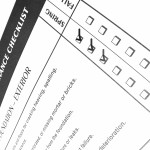Many of our investors own a leasehold property – effectively this is a long tenancy where the leaseholder has the right to occupy the property for the term of the lease. But if you do own a leasehold property, and most apartments in residential blocks are leasehold, just who is responsible for repairs and maintenance?
 Well, this can be a thorny issue as typically the freehold interest, and the communal areas in a residential block, may be owned by an independent company. The terms of the lease usually determine exactly who is responsible for what but we’ve put together some guidelines to help you.
Well, this can be a thorny issue as typically the freehold interest, and the communal areas in a residential block, may be owned by an independent company. The terms of the lease usually determine exactly who is responsible for what but we’ve put together some guidelines to help you.
The leaseholder’s responsibilities
The leaseholder is usually responsible for everything within the four walls of the property, including floorboards and the plaster on the walls and ceiling. They are required to keep the flat in good order, pay the service charge, behave in a neighbourly manner and obtain consents if required, for example, if they wish to sub-let the property or carry out alterations. They must also pay ground rent to the freeholder.
The freeholder’s responsibilities
The freeholder usually owns the structure of the building and the common parts and is responsible for the maintenance and repair of the building, recovering the costs from the leaseholders through a service charge.
In addition to maintaining and repairing the building, the freeholder is responsible for buildings insurance and possibly the provision of central heating, lifts, porterage, estate staff, lighting and the cleaning of communal areas. Again the costs of these services are recovered through the service charge. The service charge also covers the cost of managing the building – this is usually carried out by a professional managing agent.
Buying a leasehold property – some points to consider
If you’re buying a leasehold apartment, you should always take into account current and future service charges and check to see if there is any reserve fund to cover major expenses in the future, for example replacing the roof of the building, decorating the exterior or replacing a lift. These payments cannot be recovered if you sell the property. Leaseholders are entitled to receive summaries of the costs of services provided such as insurance and see copies of invoices if they wish. Most leases require money to be collected in advance to hold in reserve (known as a sinking fund) to ensure money is available for these types of expenses and they must be consulted about any major work to be carried out.
So, a brief guide to the responsibilities of leaseholders and freeholders but hopefully a useful one! You’ll find specific details of your contractual obligations in your own lease but if you have any general questions, please feel free to post them on our blog.
International offices















